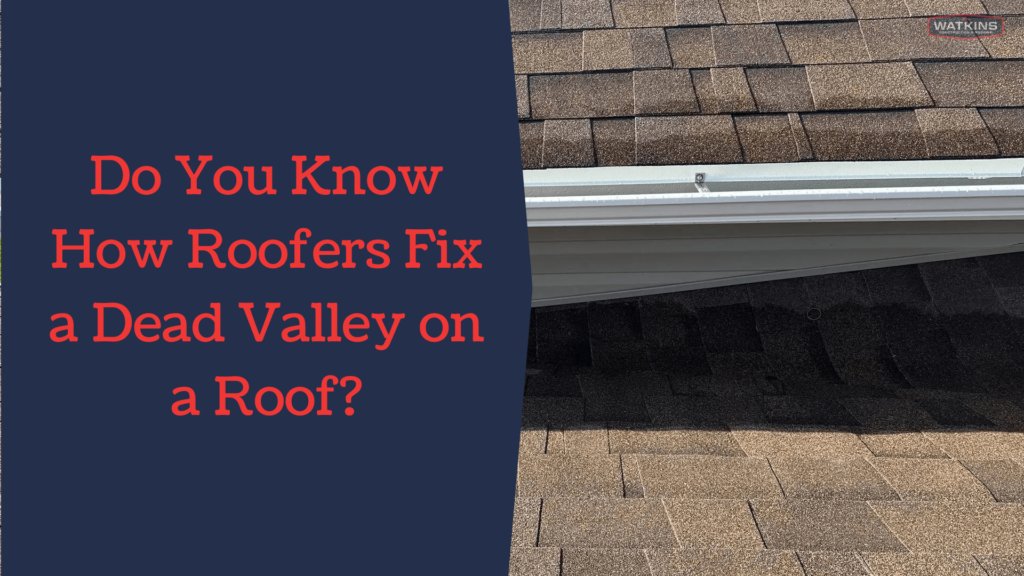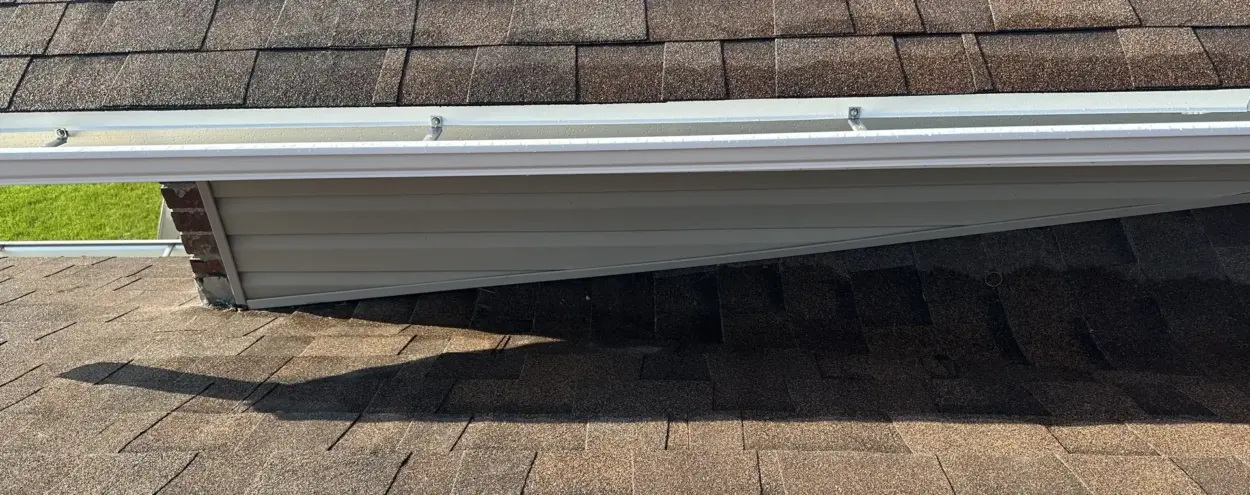Do you know how roofers fix a dead valley on a roof? Watkins Construction & Roofing has provided you with an article to keep you in the know! In the roofing industry, a dead valley is an area of a roof that receives water but does not control or direct it, allowing the water to pool. The most common location for a dead valley is where two or more opposing roof slopes converge onto a flat or nearly flat area.
When a valley is poorly designed, water can pool instead of flowing through it because water is channeled there intentionally. A dead valley in a fiberglass/asphalt roof would allow water to pool and eventually leak into the attic. Such roofs require a pitch of at least 3:12.

Some roof installers are more skilled than others at removing and replacing valley flashing. A quality roofing company will inform you of a dead valley on your roof and fix it so it won’t happen again.
Professionals use several techniques to identify and correct dead valleys. The goal is to channel water safely away from the site until it reaches a drain or gutter system.
Why Is a Dead Valley On a Roof Bad?
Roofing materials that slope downward, such as shingles and shakes, are vulnerable to standing water. Shingles work because they direct water down, but pooling water can attack shingles from underneath.
Water pools under standard shingles during dead valleys, often penetrating the underlayment through a seam and penetrating the underlayment. When moisture penetrates the decking under the roof, rot is common.
In some cases, the roofs of commercial buildings or strip malls are flat or nearly flat. These roofs lack shingles and instead have solid materials such as rubber or tar. Underneath these roofs, there is usually an area of sloping insulation panels connected.
Typical homes have pitched roofs, so the ridges and hips are above the gutters, and gravity channels water to the gutters through the valleys. Dead valleys, however, result in water not moving to the gutters and must be addressed.
How Does a Roofer Fix a Dead Valley?
A dead valley allows water to enter, but it cannot escape. If you have a dead valley on your roof, water collects because it has nowhere to drain.
Sludge forms on the roof when water doesn’t leak under the shingles. Debris often ends up on the roof and becomes saturated with stagnant water, making it heavier, so it doesn’t wash away but stays on the roof instead.
In order to correct dead valleys, the water must be accelerated (by increasing the slope) until it drains away. Gravity will force the water down in any direction, so drains can be placed strategically within the roof to direct the water to a safe location.
A tapered insulation panel or even a knee wall may also be used to increase the slope. Generally, tapered insulation panels will increase slopes of 12″ or less, while knee walls will correct slopes of 12″ or more.
What Is a Cricket On a Roof and What Does It Do?
Roofing installers may install a cricket in a roof to divert water from one point to another, preventing the formation of a dead valley. Crickets transform water in two directions rather than converging it, halving its volume.
Crickets are small hip roofs designed to divert rainwater away from vertical surfaces. Cricket, for example, diverts rainwater in two directions instead of convergent rainwater into one valley.
Crickets divert water away from chimneys, preventing this damage by preventing rainwater from penetrating the joint between the roof and the bottom of the chimney.
What Do I Do If a Dead Valley Can’t Be Fixed?
When a roof is large, it can be challenging to repair a dead valley by increasing the slope. Instead of correcting the roof slope, the roofing material can be updated. As previously mentioned, flat or nearly flat roofs are commonly found, but they require a different type of material.
Self-Adhesive Bitumen
As with fiberglass/asphalt shingles, self-adhesive bitumen comes in rolls about 40″ wide and 25′ long rather than individual shingles. This eliminates fasteners and seams, which significantly cause roof leaks.
Unlike hot-mopping or roll-on adhesives, self-adhesive bitumen has a removable backing, making it easy to expose the adhesive. Roof decking is often sealed permanently with self-adhesive bitumen.
Thermoplastic Polyolefin (TPO)
Thermoplastic polyolefin is a rubber roofing material that reduces the heat and UV radiation that passes through the roof. TPO is typically light in color, which helps it reflect much of the sun’s heat and reduces attic heat buildup.
Due to its light color, TPO is not usually used in residential construction, but it can be used effectively on low-sloped roofs where appearance is less critical. Installation of most TPO requires the application of an adhesive before it can be used.
Ethylene Propylene Diene Monomer (EPDM)
EPDM is made from two commonly used roofing materials, ethylene, and propylene, which remain flexible over time, reducing cracks and gaps caused by UV radiation.
A rubber roof made of standard rubber materials tends to dry out due to UV radiation damage, whereas EPDM is greater tensile strength and, therefore, is less prone to tearing.
For more information, you can reach Watkins Construction & Roofing at 601-488-3179. We service areas in Jackson, Flowood, Clinton, and Ridgeland, MS.
